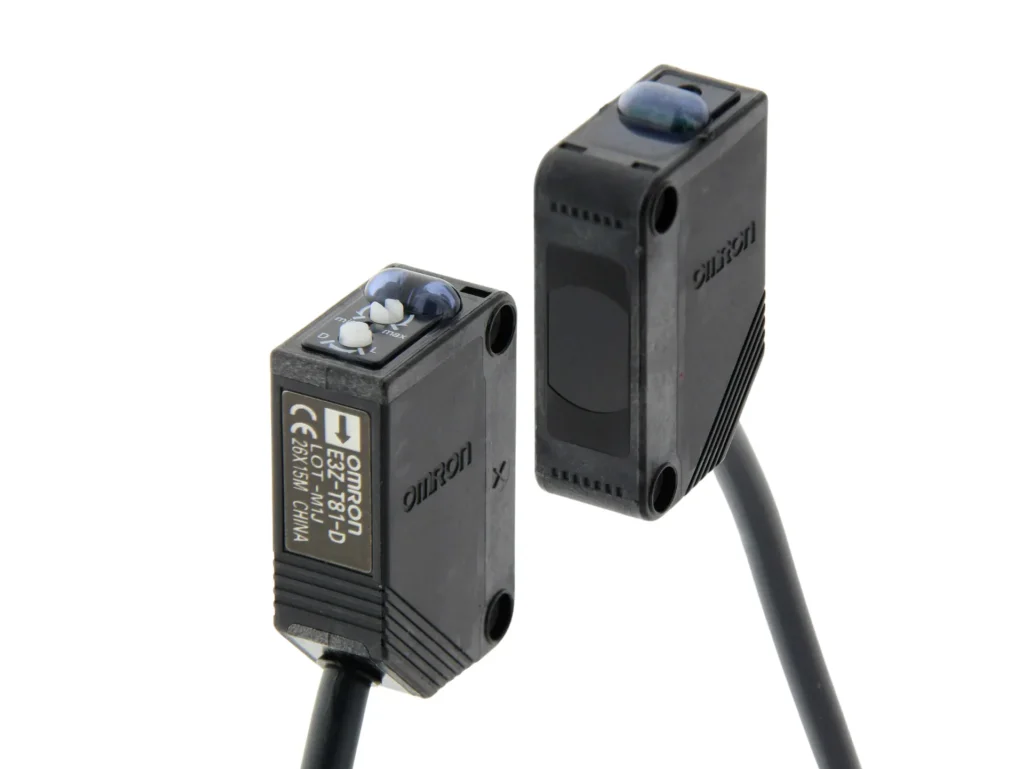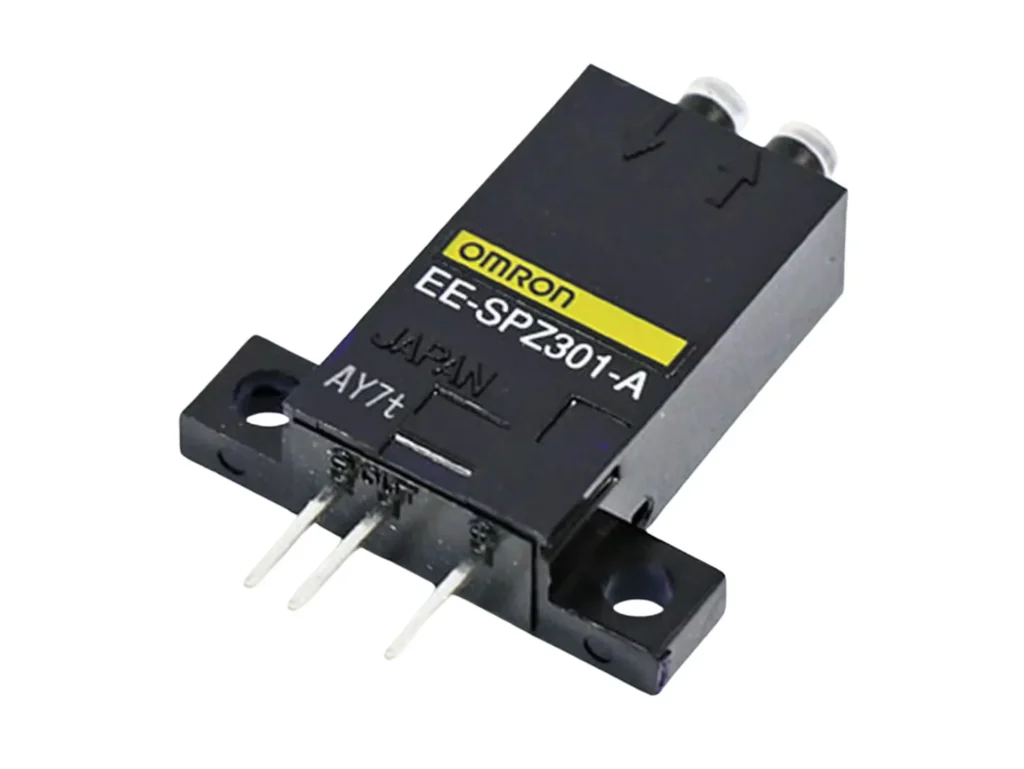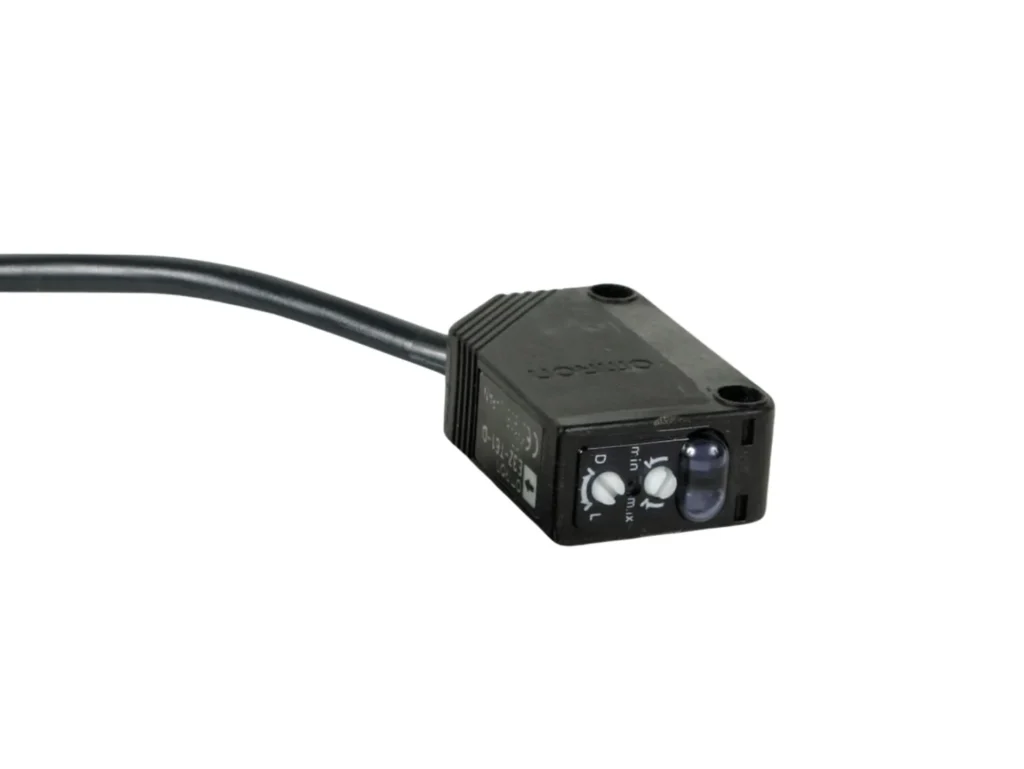What Are the Three Types of Photoelectric Sensors?
- kwoco-plc.com
- September 5, 2024
- 8:24 pm
When it comes to industrial automation, precision is key. But how can we ensure systems detect objects with accuracy? That’s where photoelectric sensors come in.
These powerful devices can detect objects, changes in surface conditions, and distances with minimal contact, making them essential for various industries.
Photoelectric sensors work by using light to detect the presence or absence of objects. In general, there are three main types: through-beam, retro-reflective, and diffuse-reflective sensors. Each type is specialized to meet specific detection needs in industrial applications.
These sensors are not only cost-effective but are also a major component in ensuring the efficiency and accuracy of your industrial systems.
Now, let’s dive deeper into the three main types of photoelectric sensors and how they function.
Table of Contents
What is a Through-Beam Sensor?
A through-beam sensor consists of two parts: a transmitter and a receiver. The transmitter emits a beam of light that the receiver captures.
When an object interrupts this beam, the sensor detects it. This type of sensor is often used when precise object detection is needed over long distances.
Through-beam sensors are ideal for detecting opaque objects and are commonly found in packaging lines, conveyor systems, and automated sorting processes.
Their reliability, however, comes with a downside—they tend to be more expensive than other sensor types due to the need for two separate components.
What About Retro-Reflective Sensors?
Retro-reflective sensors, on the other hand, use only one component—a single transmitter-receiver unit. The transmitter sends out a light beam toward a reflector, which bounces the light back to the receiver.
When an object passes between the sensor and the reflector, it interrupts the beam, causing the sensor to detect the object.
One of the key advantages of retro-reflective sensors is their simplicity and ease of installation.
They work well over moderate distances and are particularly useful in applications where the space is limited, but you still need reliable detection.
However, they can struggle with detecting shiny or reflective objects, as these might bounce the light back to the receiver even when interrupted.
How Does a Diffuse-Reflective Sensor Operate?
The third type is the diffuse-reflective sensor, which functions differently from the other two. Instead of relying on a reflector or separate receiver, this sensor detects objects based on the light that is reflected directly off the object itself.
The transmitter sends out a beam of light, and if an object reflects it back to the receiver, the sensor detects it.
Diffuse-reflective sensors are great for detecting objects with varied surfaces and materials.
However, they are less accurate over long distances compared to through-beam or retro-reflective sensors. They are often used for short-range applications, like detecting products on a conveyor belt.
Which Photoelectric Sensor Should You Choose?
Choosing the right photoelectric sensor depends on your specific application needs. Are you dealing with long-range detection? Then a through-beam sensor might be the best option. If you need a sensor that’s easy to install in a space-constrained area, consider a retro-reflective sensor. For applications requiring close-range detection of varied surface materials, diffuse-reflective sensors are ideal.
These sensors all have their strengths and weaknesses. It’s crucial to consider your environmental factors, detection distance, and the type of objects you’ll be detecting when making your decision.
Common Questions About Photoelectric Sensors
- What is the difference between a through-beam sensor and a retro-reflective sensor?
- Can photoelectric sensors detect transparent objects?
- What factors should I consider when installing a photoelectric sensor?
- How do environmental factors like dust and light affect sensor performance?
- Can diffuse-reflective sensors be used for high-speed applications?
- What are the common issues faced when using retro-reflective sensors with reflective materials?
Conclusion
Photoelectric sensors play a vital role in ensuring precision and efficiency in industrial applications. Whether you choose through-beam, retro-reflective, or diffuse-reflective sensors, understanding their strengths and limitations is key to optimizing your automation processes. Choose wisely, and you’ll see improved productivity and accuracy in your operations.
At Kwoco, we specialize in providing original and high-quality industrial automation products, including the latest photoelectric sensors from top brands like Omron, Keyence, and Schneider. Whether you’re upgrading your system or setting up a new project, we’ve got the right solutions in stock, ready to ship. Contact us ([email protected]) today to get a fast quote.
Contact Us
Just fill out your name, email address, and a brief description of your inquiry in this form. We will contact you within 24 hours.
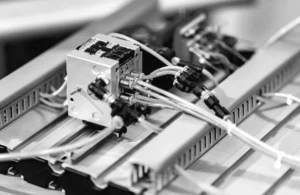
Why Your PLC Needs a Separate Power Supply
Why Your PLC Needs a Separate Power Supply Have you ever wondered why PLC systems often require a separate power
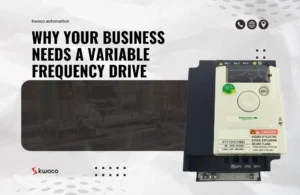
Why Your Business Needs a Variable Frequency Drive
Why Your Business Needs a Variable Frequency Drive When managing industrial operations, optimizing energy efficiency while maintaining performance is crucial.
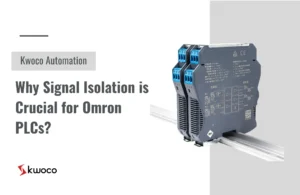
Why Signal Isolation is Crucial for Omron PLCs?
Why Signal Isolation is Crucial for Omron PLCs? In the world of industrial automation, signal interference is a silent killer.

